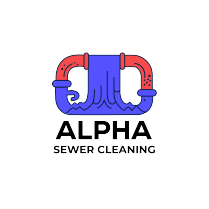24/7 EMERGENCY SERVICES
317 Loring Road Levittown NY 11756
Power wash

Power washing, also known as pressure washing, is an efficient and effective method for cleaning surfaces by using high-pressure water jets. It’s commonly employed for residential, commercial, and industrial cleaning tasks to remove dirt, mold, mildew, grime, and other stubborn stains from various surfaces.
This guide explores the key aspects of power washing, its benefits, techniques, and safety precautions.
What Is Power Washing?
Power washing uses a motorized pump to pressurize water and expel it through a nozzle at high velocity. The pressure effectively breaks down dirt and contaminants from surfaces. Power washing often includes the use of heated water, which is especially effective for removing grease and tough stains, whereas pressure washing typically uses cold water.
Benefits of Power Washing
-
Restores Appearance
- Removes grime, mold, and stains, rejuvenating the appearance of surfaces.
-
Prevents Damage
- Regular cleaning prevents dirt, moss, and mildew buildup, which can degrade surfaces over time.
-
Improves Hygiene
- Cleans bacteria, mold, and other allergens, creating a healthier environment.
-
Increases Property Value
- Clean, well-maintained exteriors enhance curb appeal and property value.
-
Prepares Surfaces for Renovation
- Ideal for prepping walls, decks, or driveways for painting, sealing, or resurfacing.
Common Applications of Power Washing
-
Residential Cleaning
- Driveways and Sidewalks: Removes oil stains, dirt, and algae.
- Home Exteriors: Cleans siding, brick, stucco, and shutters.
- Decks and Patios: Clears grime and mold for a refreshed look.
- Fences: Removes dirt and moss for wooden or vinyl fences.
-
Commercial Use
- Parking Lots: Maintains cleanliness and safety by removing grease and stains.
- Storefronts: Enhances the visual appeal of businesses.
- Equipment Cleaning: Removes dirt and grime from machinery.
-
Industrial Applications
- Factories and Warehouses: Cleans floors, walls, and industrial equipment.
- Construction Sites: Clears dirt and debris from tools and vehicles.
Equipment Used in Power Washing
-
Power Washer Machine
- The primary device that pumps and pressurizes water.
-
Nozzles
- Different types provide varying spray patterns and pressures (e.g., wide spray, pinpoint jet).
-
Detergents and Cleaning Agents
- Optional for tough stains, grease, or mildew.
-
Protective Gear
- Gloves, goggles, and sturdy footwear to ensure safety.
Pressure Levels for Different Surfaces
-
Low Pressure (500–1,200 PSI)
- Suitable for delicate surfaces like windows, wooden decks, and painted surfaces.
-
Medium Pressure (1,200–2,500 PSI)
- Best for concrete patios, fences, and home exteriors.
-
High Pressure (2,500–4,000 PSI)
- Effective for industrial cleaning, driveways, and heavy machinery.
How to Power Wash Effectively
1. Prepare the Area
- Remove furniture, vehicles, and plants from the area to avoid damage.
- Cover electrical outlets and fixtures.
2. Choose the Right Nozzle
- Select a nozzle based on the surface and type of cleaning required.
3. Test the Pressure
- Begin with low pressure and increase gradually to avoid damaging the surface.
4. Apply Cleaning Solution
- For tough stains, use a suitable detergent. Allow it to sit for a few minutes.
5. Power Wash the Surface
- Use consistent, even strokes.
- Maintain a steady distance (usually 6–12 inches) to prevent surface damage.
6. Rinse Thoroughly
- Ensure all cleaning agents and debris are rinsed away.
Safety Precautions
-
Wear Protective Gear
- Always wear goggles, gloves, and non-slip footwear.
-
Avoid Direct Contact
- Never aim the pressure washer at people, animals, or yourself.
-
Beware of Electric Hazards
- Avoid spraying near electrical outlets or wiring.
-
Use Appropriate Pressure
- Excessive pressure can damage surfaces or cause injury.
-
Work on Stable Ground
- Ensure a firm stance to avoid slipping or losing control of the washer.
Common Mistakes to Avoid
-
Using Too Much Pressure
- Can strip paint, damage wood, or etch concrete.
-
Ignoring Surface Preparation
- Failing to prep the surface may lead to uneven cleaning.
-
Holding the Nozzle Too Close
- Can cause streaks or gouges on surfaces.
-
Skipping Safety Gear
- Increases the risk of injury.
Cost of Power Washing
-
DIY Costs
- Renting a power washer: $40–$100 per day.
- Purchasing a power washer: $200–$600.
-
Professional Services
- Home exterior: $200–$600.
- Driveways: $100–$300.
- Decks and patios: $150–$400.
Environmental Considerations
-
Water Usage
- Use minimal water by choosing the correct nozzle and pressure settings.
-
Cleaning Agents
- Opt for biodegradable and eco-friendly detergents.
-
Wastewater Management
- Ensure wastewater doesn’t enter storm drains, especially if chemicals are used.
Conclusion
Power washing is an invaluable tool for maintaining and revitalizing various surfaces, offering a cost-effective and efficient cleaning solution. By using the correct equipment, techniques, and safety precautions, you can achieve professional-grade results and keep your property looking its best. Whether you choose to DIY or hire professionals, regular power washing is a worthy investment in the longevity and aesthetics of your property.
Newsletter
Drain cleaning involves removing clogs, debris, and buildup from pipes to restore proper water flow. It ensures smooth drainage, prevents blockages, and protects plumbing systems from damage. Professional drain cleaning uses tools like hydro jetting or augers for efficient and lasting results.
Design By Oll Solutions

